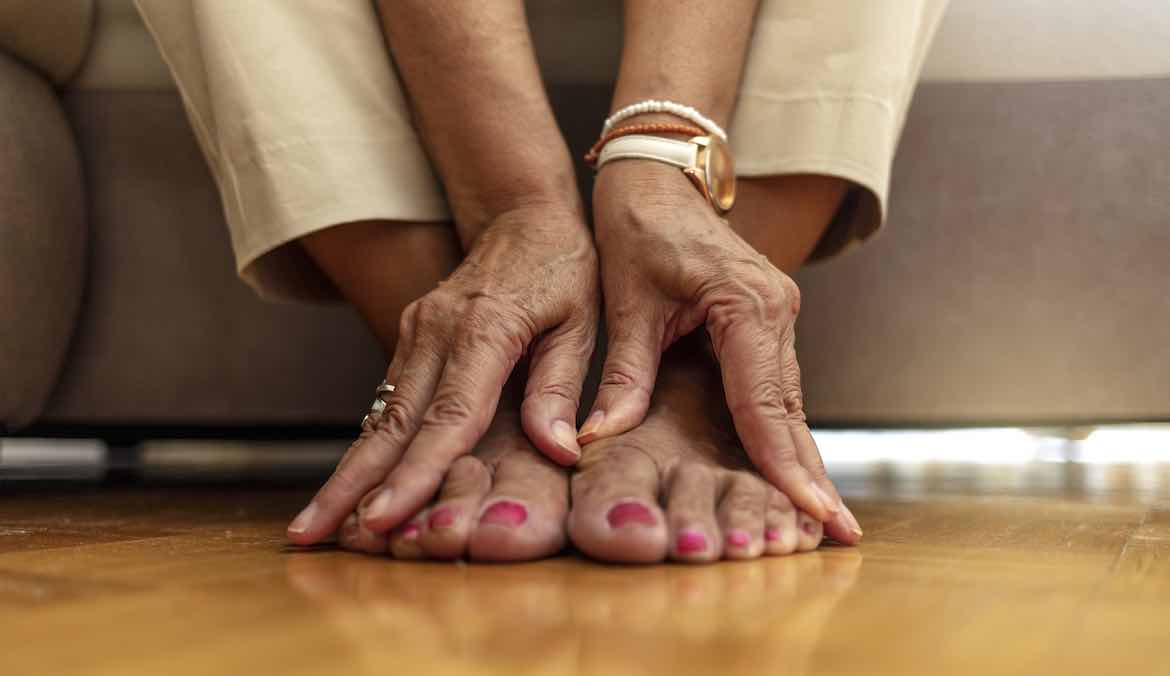But blood flow is just one of the many health signs you can see on your feet. However, in order to be able to read these signs correctly, it is important to first understand what healthy feet look like.
What do healthy legs look like?
“The legs are very complex, with skin different and thicker than the skin anywhere else on the body,” says Dr. Canuso. Of course, like the rest of your skin, feet in good condition will also have a moist, soft and smooth appearance and texture.
“Healthy feet and skin should look well hydrated and toenails should be pink and flat,” says Dr. Canuso. Your toes should also be painless and free of sores, as well as any other signs of damaged skin, he adds.
Dry, cracked heels are probably a sign of foot fungus
It is not uncommon to have dry skin on the soles of your feet, but it is not due to dehydration as most people think. However, it often does not draw the attention that dry skin can cause to other parts of your body, says Dr. Canuso.
“For example, if you have had dry skin on your face for more than two weeks, you would probably have some concerns and maybe visit a doctor for the problem,” he says. “However, dry skin on your feet for more than two weeks is often not only ignored but also accepted.
People may think that getting regular pedicures will just solve the problem, says Dr. Canuso, but that is not the case. IIf you have dry skin on your feet for more than two weeks, it is most likely due to fungus on your feet, as opposed to dry skin. “An antifungal foot serum can heal dry skin and prevent future damage, so it does not come back,” says Dr. Canuso. If you are not sure, consult a doctor who can confirm and write you a prescription medication that you should treat if needed. Otherwise, there are over-the-counter, antifungal options as well.
Currently, I am in the process of using Dr.’s foot fungus repair kit Canuso, which consists of a serum to treat dry, cracked heels and an oil to remove fungus that is on the toenails or may be stuck under or around the toes. So far, so good, but it will take about three weeks for me to see substantial improvement and results.
Thick, brittle or yellow toenails are signs of toenail fungus
“Contrary to popular belief, it rarely comes from pedicures and usually comes from years of ignoring dry skin on your heels, which is a fungus,” says Dr. Canuso. This fungus then travels to your toenails and leads to toenail fungus. Toenail fungus is difficult to treat because most treatments focus only on the nail treatment and not on the cause of the toenail, which is the dry skin on your feet. “Look for a two-step antifungal treatment to treat both dry skin and toenails,” suggests Dr. Canuso.
Toe stinging or sore toes can be a sign of diabetes
“For some people, tingling or pain in your toes is the first sign that they may have diabetes,” says Dr. Canuso. “Swelling of the legs and ankles can also be an early sign of diabetes,” he adds.
Blue toenails can be a sign of cardiovascular disease
A blue discoloration on the toes and toenails may indicate peripheral vascular disease (PVD), which is a systemic disease of the circulatory system that causes poor blood flow to the extremities. “This reduction in blood flow to the small blood vessels in your toes can lead to pain or discoloration and can alert your doctor to more serious cardiovascular disease,” explains Dr. Canuso.
Inward-pointing toenails can be a sign of lung disease
Although curly toenails may appear naturally, it is worth looking into if your toenails did not look like that. “If curvature occurs later in life, especially after you have had normal toenails, it could be a sign that there is a reduction in oxygen and its flow to the nails, which is secondary to reduced lung function,” says Dr. Canuso. .
Conclusion
Healthy feet should be soft and smooth with a pink color indicative of good blood flow. If you notice any of the above warning signs, talk to your podiatrist about any health concerns as soon as possible.
Oh Hello! You look like someone who loves free workouts, discounts on modern wellness brands and exclusive Well + Good content. Join Well +, our online wellness community and unlock your rewards right away.



